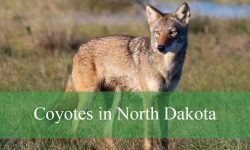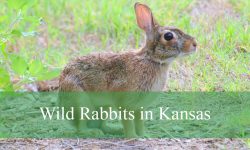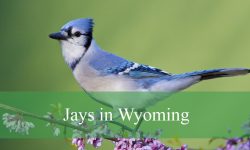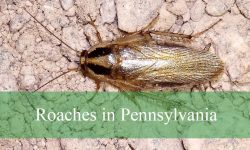When strolling through the green patches of Central Park, the wooded corners of Harlem, or even the fringes of Brooklyn, you might catch a flash of slick black fur darting up a tree. It isn’t a raccoon. It’s a squirrel — but not just any squirrel. These are the intriguing black squirrels of New York, and there’s far more to them than meets the eye.
While most city-dwellers expect the familiar grey or brown-furred critters, the dark-coated squirrels carry a story rich in genetics, urban ecology, and local lore. In this deep-dive article, we’ll explore their origins, what makes them unique, how they thrive in the urban jungle of New York, and what their presence might reveal about broader ecological trends.
Understanding the Basics – Who are these black squirrels?
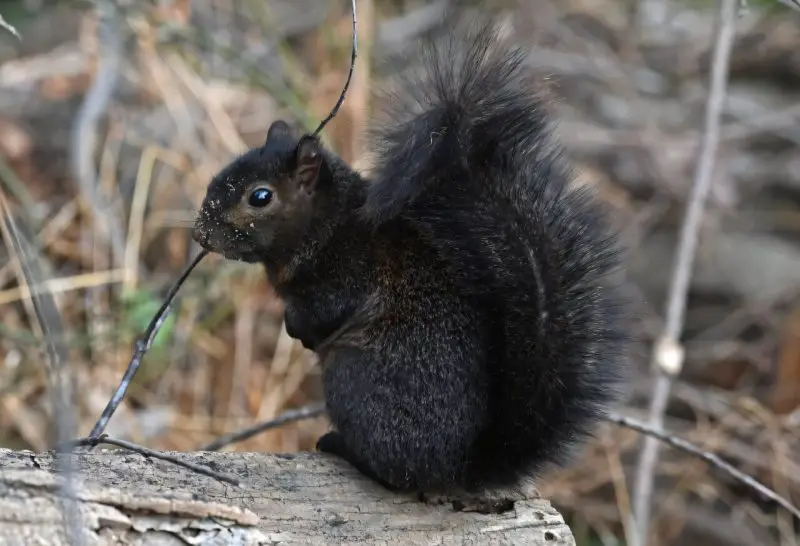
A color variant, not a separate species
The black squirrels seen around New York are not a distinct species. Rather, they represent a melanistic variation of the common Eastern Gray Squirrel (Sciurus carolinensis). Melanism is a genetic mutation that causes an overabundance of dark pigment in the fur, making the coat appear black.
Because of this, black-furred squirrels share most of their behavior, habitat preferences, diet, and even genetic lineage with the typical grey squirrels found across the city and state. What changes is their coloration — a change that, surprisingly, has ripple effects.
How rare are they?
In many regions they’re considered rare — some estimates suggest occurrences on the order of 1 in 10,000 individuals. According to one article, in parts of New York City, black squirrels are found but still markedly uncommon.
That said, the fact you can spot them at all in dense urban settings like Manhattan or Roosevelt Island suggests that there are pockets where their populations are concentrated or at least sustained.
What causes the black fur?
The black fur results from a recessive gene, or more precisely a genetic variant that influences pigmentation. When two carriers meet, there’s a chance the offspring will express the dark coat. In fragmented or localized populations (such as islands of green in a city), the gene may become more visible because of relative isolation and less gene flow from outside groups.
Where in New York are they found?
Urban “islands” of habitat
One of the most fascinating aspects is how these black squirrels seem to thrive in certain urban “islands” of habitat within the city. For example, on Roosevelt Island or in certain pockets of Manhattan, the relative isolation (roads, water, built environment) creates conditions where a small population can persist.
Other green zones like parks or wooded areas can serve as refuges where the melanistic trait has the chance to maintain itself. For city dwellers, that means your unexpected black squirrel sighting might not be purely random — it could reflect a little ecosystem of its own.
Beyond the city limits
Black squirrels are also reported in larger areas of New York State, not just the five boroughs. In fact, state wildlife literature confirms that grey squirrel populations in New York can include black-furred individuals among other color variants.
Why you might notice them more now
Some observers believe sightings have increased in recent years. Whether that’s due to actual population growth, more media and social media posts, or simply more people looking is a separate question. One article notes that black squirrels in New York State have been increasingly noticed.
Urban expansion, changing predator/prey dynamics, and shifting human-wildlife interaction might all play roles.
What’s the Mystery? Secrets Behind the Black Squirrels
Advantages of dark fur in urban settings
One question is: does being black give these squirrels an advantage in the city? Some scientists suggest darker fur may help with heat absorption in winter, aiding survival in colder climates. For instance, in northern areas where snow covers the ground, a black coat absorbs more solar radiation, potentially enhancing thermoregulation.
In urban settings, where microclimates differ (heat islands, paved surfaces, warm building runoff), perhaps melanistic squirrels find niches where their coloration is advantageous.
Genetic isolation and “island effect”
The concept of urban habitat islands is an important clue. Parks, small green patches, tree-lined corridors can become semi-isolated habitats. In such areas, gene flow (movement of squirrels in and out) is limited, and so rare traits like melanism can become more common locally. The “island effect” thus helps explain where black squirrels persist.
Misconceptions and folklore
Because black squirrels are less common, they attract attention and sometimes folklore. One idea is that an increased number of black squirrels signals a harsh winter ahead — the reasoning being that darker fur retains more warmth. While there is some intuitive logic, the scientific basis is weak and anecdotal at best.
Similarly, some assume black squirrels will behave differently from greys — but in fact their behavior is largely the same (we’ll address that below).
Behavior, Diet & Ecology – What’s Normal and What’s Unique
Behavior and diet mirror grey squirrels
The black squirrels in New York eat the same foods as typical grey squirrels: nuts (acorns, walnuts), seeds, fruits, bark, occasionally insects. They nest in trees (dreys), use forks in branches, exploit human-provided food sources like bird feeders and park picnics. State education material notes that grey squirrels “can come in a variety of colors … gray, brown, black, and cinnamon fur.”
Urban adaptation
In the city, squirrels are clever. They exploit human modifications: benches, underpasses, street trees, planting strips. The black squirrels are no exception. They’ve adapted to busy park environments, dodging pedestrians and cars, timing their foraging accordingly. One blog post about them in the Bronx noted that though the coloration is unusual, behaviorally the black squirrels are “just as prone to hassle you for snacks” as ordinary greys.
Are there any differences or implications of melanism?
While behaviorally similar, melanism might carry subtle physiological or ecological differences. For example:
- Heat regulation: darker fur absorbs more heat, which may offer benefits or costs depending on conditions.
- Predation risk: on one hand black fur stands out more in certain backgrounds (for ground predators) but may blend better in shaded forest or urban tree canopy.
- Social dynamics: limited research in urban squirrels, but in isolated pockets gene frequency may shift.
However, for most practical observations in the city, you likely will not notice dramatic behavioral differences between black and grey squirrels.
Significance & Implications of Black Squirrels in New York
Urban wildlife diversity indicator
The presence of black squirrels in New York’s parks and green areas is a subtle but meaningful indicator of urban biodiversity. It suggests that even in heavily built-up environments, animal populations retain genetic variation and are adapting to city life. Observers from the state’s Department of Environmental Conservation note the color variants among the grey squirrel population.
Genetics meeting urban ecology
Black squirrels are a compelling case of how genetics interacts with urban ecosystem dynamics. Isolation by roads, waterways, and built structures can create localized populations where certain traits become more common. Researchers studying urban ecology increasingly pay attention to these “micro-populations” and the hidden genetic stories they tell.
What they tell us about environmental change
Whether an increasing number of black squirrels signals some broader shift (climate, habitat fragmentation, human feeding behaviors) remains speculative. Anecdotally, some believe more black squirrels = more challenging winters or altered habitats.
Even if that specific claim is weak, their growing visibility suggests something worth watching: urban wildlife is resilient, but also sensitive to changes in habitat connectivity, food availability, and human interaction.
Where to Spot Them (and Tips for Enthusiasts)
Best places in New York City
If you’re curious to see a black squirrel for yourself, consider visiting:
- Roosevelt Island: A smaller green habitat surrounded by water, making it ideal for isolated populations.
- Northern sections of Central Park and adjacent wood-lined areas: Blog posts point to sightings in the park’s north end and surrounding neighborhoods.
- Other parks and green corridors in Manhattan and the outer boroughs where tree cover is contiguous and less disrupted.
When and how to spot them
- Early morning or late afternoon in shady tree-lined zones may increase your chances.
- Move quietly and watch tree canopies, benches, ground near acorns.
- Note: their dark fur may make them harder to spot in deep shade or against dark trunks, but easier in snow or light backgrounds.
- Bring a camera! Sharing pictures on nature-forums may help widen what’s known about their spread.
What to do (and what not to do)
- Do respect the animals: observe from a distance, avoid feeding them too much human junk food.
- Don’t assume they are tame; they are wild animals and can still become stressed or aggressive.
- Be aware of your surroundings: roads, pedestrians, dogs can all influence squirrel behavior.
- Consider contributing to citizen-science: note location, presumed number, behavior, maybe even the proportion of black vs grey squirrels you see.
Common Myths & Questions Debunked
Myth – “Black squirrels mean a severe winter ahead”
Yes, the myth exists: a rise in black squirrel sightings signals harsh winter. While the idea has a veneer of logic (dark fur = more heat absorption), there’s no rigorous scientific evidence tying black squirrel prevalence to winter severity.
Myth – “Black squirrels are more aggressive or stray from trees”
No. From observations and notes from park biologists, black squirrels behave just like their grey cousins: nest in trees, forage on ground and in branches, exploit urban environments. Their color does not equate to a behavioral shift.
Question – Are they invasive or bad for grey squirrels?
Not in New York’s urban parks. Because they are the same species (just a color variation), they don’t “out-compete” greys in the way that a separate invasive species might. The gene simply persists in certain pockets. Some other regions have reported black morphs spreading, but in New York the dynamics are more about local population genetics than invasive takeover.
What the Future Holds – Observations & Conservation Thoughts
Monitoring urban wildlife genetics
As cities grow and green spaces fragment further, pockets of wildlife can become more isolated. For populations like the black squirrels, this isolation may either preserve the black fur gene or threaten it (via lack of genetic diversity). It’s a small but illustrative example of urban evolutionary dynamics.
Human-wildlife coexistence
The black squirrels highlight how humans and wildlife share spaces in unexpected ways. From squirrels navigating busy park paths to humans actively photographing them, there’s a relationship here. Maintaining tree canopy, preserving connected green corridors and limiting harmful human impacts (pollution, predation by pets) all matter for the future of such urban wildlife.
Should we worry?
No immediate threat appears posed by the black squirrels themselves. They’re neither invasive nor harmful in the parks. But their existence reminds us of broader issues: habitat fragmentation, the impacts of urbanization on wildlife, and how even common species adapt (or fail to) in changing environments. Quality of urban habitat matters.
Conclusion
The black squirrels of New York are far more than a curious oddity. They are living proof of how genetics, urban ecology, and human-nature interactions intersect in surprising places. When you next stroll through a quiet corner of a city park and spot that sleek black tail flicking across a branch, you may just appreciate the rich story behind it — a story of survival, adaptation, and hidden diversity in the concrete jungle.
By understanding them a little better, we not only enrich our appreciation for urban wildlife, but also gain insights into the delicate ecological webs that persist—or falter—amidst skyscrapers, sidewalks and subway noise. The next time someone dismisses a squirrel as “just a squirrel”, remember: one of them might be the dark-furred anomaly rewriting what we thought we knew.

